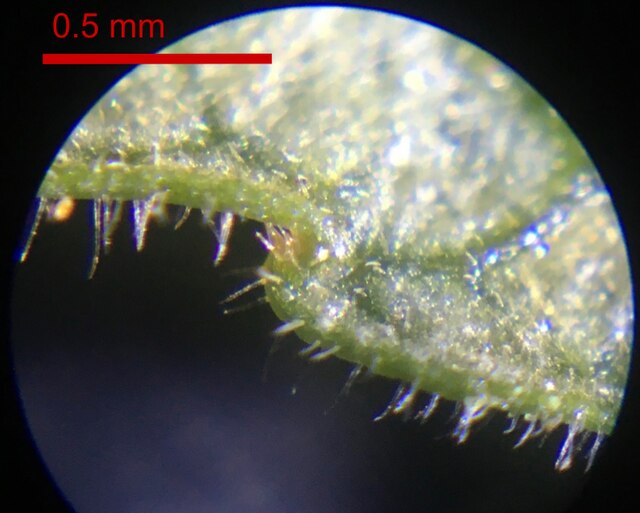The Salicaceae are the willow family of flowering plants. The traditional family (Salicaceae sensu stricto) included the willows, poplars. Genetic studies summarized by the Angiosperm Phylogeny Group (APG) have greatly expanded the circumscription of the family to contain 56 genera and about 1220 species, including the tropical Scyphostegiaceae and many of the former Flacourtiaceae.[4][5][6]
| Salicaceae Temporal range: | |
|---|---|
 | |
| Salix alba | |
| Scientific classification | |
| Kingdom: | Plantae |
| Clade: | Tracheophytes |
| Clade: | Angiosperms |
| Clade: | Eudicots |
| Clade: | Rosids |
| Order: | Malpighiales |
| Family: | Salicaceae Mirb.[2] |
| Subfamilies[3] | |
| Synonyms | |
| |


In the Cronquist system, the Salicaceae were assigned to their own order, Salicales, and contained three genera, Salix, Populus, and Chosenia (now a synonym of Salix). Recognized to be closely related to the Violaceae and Passifloraceae, the family is placed by the APG in the order Malpighiales.
Under the new circumscription, most members of the family are trees or shrubs that have simple leaves with alternate arrangement, and temperate members are usually deciduous. Most members have serrate or dentate leaf margins, and many of those that have such toothed margins exhibit salicoid teeth, a salicoid tooth being one in which a vein enters the tooth, expands, and terminates at or near the apex, near which are spherical and glandular protuberances called setae. Sometimes the glands will deflate and appear torus (doughnut) shaped. Some members of the family exhibit violoid or theoid teeth, characters along with presence of an aril and introrse anther dehiscence that are sometimes used to split the family into three families, Salicaceae sensu medio, Samydaceae, and Scyphostegiaceae.[7][8] Members of the family often have flowers which are reduced and inconspicuous, and all have ovaries that are superior or half-inferior with parietal placentation.[9]
Genera by subfamily and tribe
Salicaceae are divided into three subfamilies, with Salicoideae further divided into seven tribes.[3][10][11] Several of these tribes are not monophyletic and await further revision.[4]
Salicoideae
Abatieae
Bembicieae
- Bembicia Oliver
Flacourtieae
- Azara Ruiz & Pavón
- Bennettiodendron Merrill
- Carrierea Franchet
- Dovyalis Arnott
- Flacourtia L'Heritier
- Idesia Maximowicz
- Itoa Hemsley
- Lasiochlamys Pax & K. Hoffmann
- Ludia de Jussieu
- Olmediella Baillon
- Oncoba Forsskahl
- Poliothyrsis Oliver
- Tisonia Baillon
- Xylosma G. Forster (now including Priamosia)[12]
Homalieae
- Bartholomaea Standley & Steyermark
- Bivinia Tulasne
- Byrsanthus Guillemin
- Calantica Tulasne
- Dissomeria Bentham
- Homalium Jacquin
- Neopringlea S. Watson
- Trimeria Harvey
Prockieae
- Ahernia Merrill
- Banara Aublet
- Hasseltia Kunth
- Hasseltiopsis Sleumer
- Macrohasseltia L. O. Williams
- Macrothumia M.H.Alford
- Neosprucea Sleumer
- Pineda Ruiz & Pavón
- Pleuranthodendron L. O. Williams
- Prockia L.
Saliceae
Scolopieae
- Hemiscolopia van Slooten
- Pseudoscolopia Gilg
- Scolopia Schreber
Samydoideae
- Casearia Jacquin (including Hecatostemon, Laetia, Samyda, & Zuelania)[7]
- Euceraea Martius
- Irenodendron Alford & Dement[14]
- Lunania Hooker
- Neoptychocarpus Buchheim
- Ophiobotrys Gilg
- Osmelia Thwaites (now including Pseudosmelia)[15]
- Piparea Aublet
- Ryania Vahl
- Tetrathylacium Poeppig & Endlicher
- Trichostephanus Gilg
Scyphostegioideae
- Dianyuea C. Shang et al.[16]
- Scyphostegia Stapf
Incertae sedis
References
External links
Wikiwand in your browser!
Seamless Wikipedia browsing. On steroids.
Every time you click a link to Wikipedia, Wiktionary or Wikiquote in your browser's search results, it will show the modern Wikiwand interface.
Wikiwand extension is a five stars, simple, with minimum permission required to keep your browsing private, safe and transparent.
